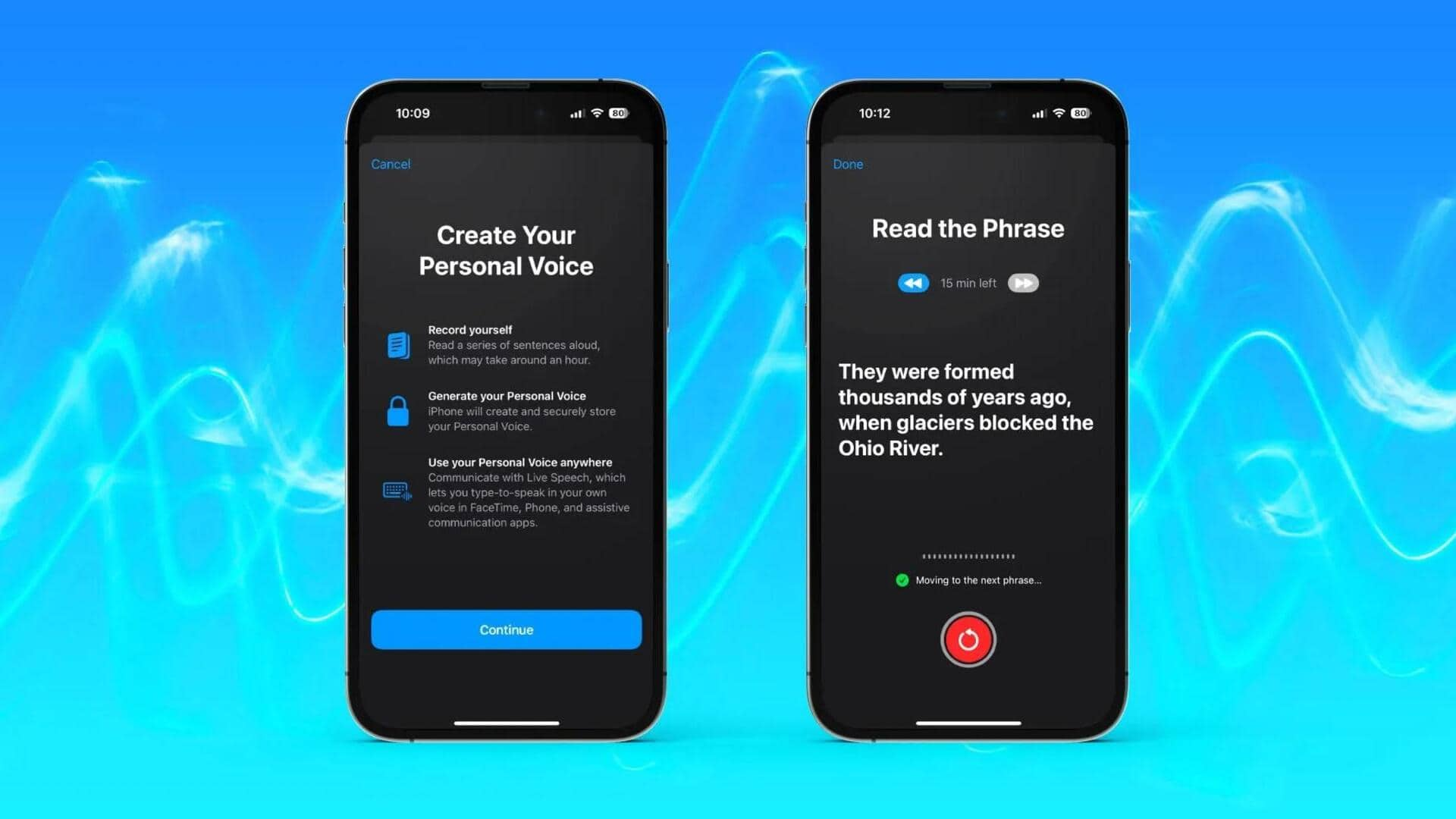
What is Apple's Personal Voice feature and how to use
What's the story
Apple unveiled a new accessibility feature called Personal Voice with iOS 17, iPadOS 17, and macOS Sonoma. The innovative tool lets you create and store a clone of your voice for use in calls, live speech, and even in-person conversations. It is currently available in English. Personal Voice is particularly beneficial for individuals who may lose their voice due to medical conditions such as Parkinson's disease, multiple sclerosis, or vocal cord paralysis.
Setup
How to set up Personal Voice on compatible Apple devices
To set up Personal Voice, you must have iOS 17, iPadOS 17, or macOS Sonoma installed on your device. You will have to read a series of text prompts to record 15 minutes of audio. Per Apple, your speech will be "processed on device overnight while your device is charging and connected to Wi-Fi." On your iPhone or iPad, navigate to Settings app >Accessibility >Personal Voice. Tap 'Create a Personal Voice' and follow the onscreen instructions to record your voice.
Use case
Using and sharing Personal Voice across all compatible devices
When the Personal Voice is ready, you will receive a notification and can test it out. You can sync your Personal Voice to other devices as well provided they have been signed in to iCloud using the same Apple ID. On your iPhone or iPad, go to Settings >Accessibility >Personal Voice >Turn on Share Across Devices. You can create up to three different personal voices and select which one to use with Live Speech by going to Accessibility settings.
Safety
Personal Voice is encrypted
According to Apple, Personal Voice is encrypted and stored locally on your device. It can only be accessed using Face ID, Touch ID or your device passcode or password. When you share your Personal Voice across devices, iCloud will store your Personal Voice using end-to-end encryption. The feature can only be used with Live Speech and third-party apps that you allow. However, the third-party apps you give access to can't capture speech from the cloned copy of your voice.